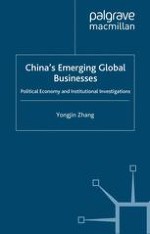2003 | Buch
Über dieses Buch
China is well-known as the largest recipient of foreign direct investment among developing countries. Little is known so far of the fact that China has become (quietly) one of the most significant third world investors in the global economy. This book traces the evolutionary path of China's outward investment activities and examines the political economy of the rapid rise of China's global businesses in the context of the economic reforms since 1978. The analysis of changing policy regimes for China's outward investment is complemented by detailed investigations of the rise and operation of three pioneering Chinese multinationals to illustrate this new thrust of China's engagement with the global economy. China's global reach examined in this study explores issues concerning China's creative responses to globalisation and the processes through which China his becoming a globalised state. The first ever book-length study of China's global investment activities, this book fills a significant gap in the literature on China's economic transformation and the rise of multinational corporations from developing countries.
Anzeige
